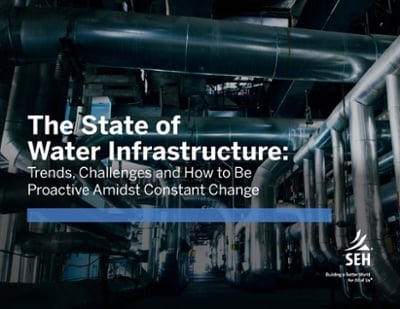Facility condition assessments play an integral role in your ability to identify problems before they arise. They uncover the structural condition of your assets – empowering you to calculate lifespans and risks, prioritize repair and replacement projects, plan for the future and prevent emergencies.
Water supply, wastewater and stormwater are essential public services that require complex and expensive infrastructure systems. These systems require careful, timely asset management over their lifespans to produce quality service and high return. Without the right level of care, your services will suffer and costs will rise. Worse, you could be hit with regulatory penalties while your customers experience health problems, poor service and property damage.
Here are seven signs your wastewater facility or similar water infrastructure may be in need of a condition assessment. You’ll also find considerations around whether to renovate or rebuild once problems are identified. Short on time? The video directly below summarizes the article in less than two minutes!
1. What is the age of your equipment?
The nation’s nearly 15,000 wastewater treatment plants are the most critical infrastructure systems for protecting public health and our environment. Years of treatment plant upgrades and more stringent federal and state regulations have significantly reduced untreated releases and improved water quality nationwide. However, these plants are aging and in need of structural evaluation.
It’s important to remember that wastewater infrastructure and equipment often wear out much faster than other water infrastructure, primarily because of the extreme conditions found at most plants.
The most sensible place to start is by uncovering the actual age of your infrastructure. When was it built? What population size was it built to serve? Have there been significant additions or upgrades to the foundational infrastructure? Age is one of the most important, albeit obvious ways to uncover whether you should undertake a renovation or build from scratch. However, it needs to be coupled with numerous other factors before you make any major decisions.
2. Are there signs of corrosion and deterioration?
Wastewater removal and treatment are critical to protecting public health. Effective wastewater treatment improves water quality by reducing toxins that cause harm to humans and pollute rivers, lakes and oceans. As a result, corrosion and deterioration can have serious and expensive ramifications.
The presence of exterior corrosion or deterioration is the most obvious sign you need a condition assessment. Sometimes it’s purely cosmetic; discoloration and rusting are going to happen. However, if you see exposed aggregate or reinforced steel on a concrete structure, close examination of the infrastructure is likely needed. Water conveyance facilities and pipes often require special attention. These facilities can be the most difficult and expensive to access for inspection, but they are often the most susceptible to corrosive damage.
The risks associated with corrosion and deterioration are high and can result in structural collapse and endangerment to your personnel. If either are present and more than cosmetic, consider your options carefully – patchwork rarely heals a festering issue and only hides it until the deeper structural issues arise.
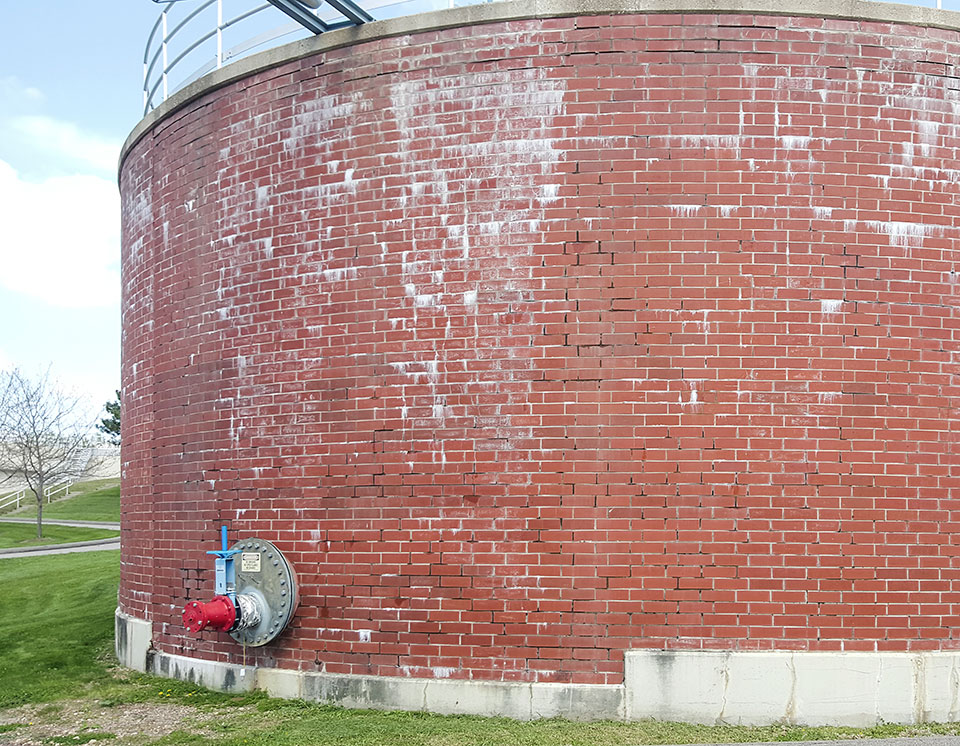
3. Do you see evidence of leakage?
Every day, nearly 6 billion gallons of treated drinking water are lost due to leaking pipes – with an estimated 240,000 water main breaks occurring each year in the U.S. Equipment age, corrosion, deterioration and many other factors can cause these breaks and leaks. Here are three additional ways you can identify signs of liquid or gas leakage:
- Liquid leakage. Keep an eye out for free-flowing process liquid from pipes, tanks and structures, as well as recurring alarms from sensors in your secondary containment systems.
- Aeration piping leakage. The loss of process efficiency or an increase in air demand might be indicative of present aeration piping leakage.
- Gas leakage. Check and double check your anaerobic digesters for methane gas leaks. The importance of doing this on a routine basis cannot be overstated.
Close evaluation can help you uncover whether repairs or a full rebuild are needed. One client had an 80-year old anaerobic digester leaking biogas. We were sure a rebuild was needed at first glance, but our condition inspection found the concrete to be in great shape. Making repairs rather than undertaking a rebuild saved this city a lot of money.
– Susan Danzl, SEH Senior Wastewater Engineer
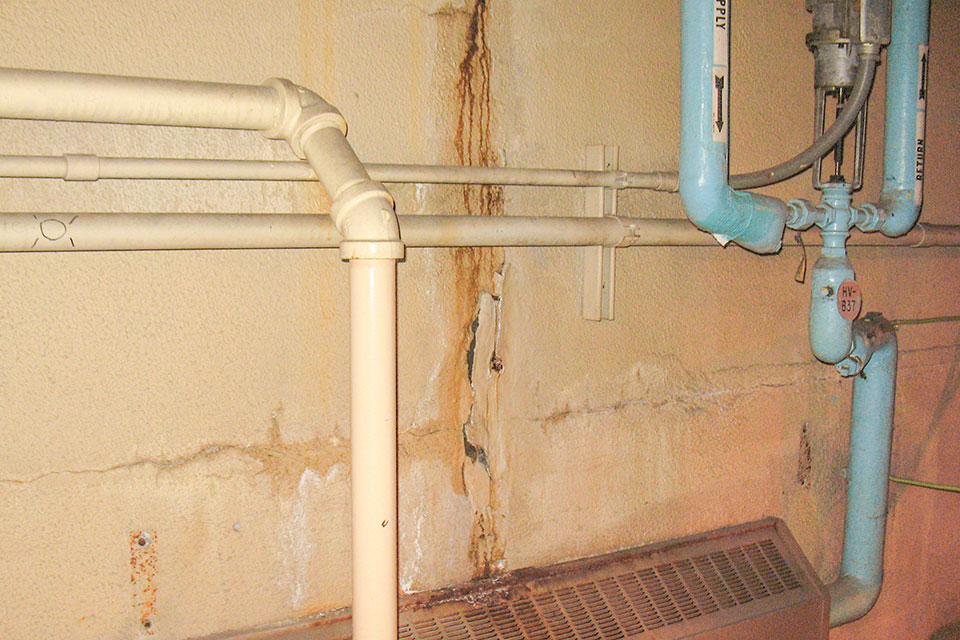
4. Have you undertaken excessive repair and maintenance?
Occasional equipment repair is expected and part of any treatment facility’s operations and maintenance strategy. However, mechanical equipment has a limited useful life – oftentimes just 15-20 years. Eventually you reach a point where your time and resources are better spent elsewhere. Certain types of repair and repair frequencies can serve as signs it’s time for an upgrade to or total rebuild of your infrastructure. Here are four examples to consider:
- Frequent bearing replacement. If the bearings on your wastewater equipment requires frequent replacement, such as every two or three months, consider replacing this infrastructure altogether.
- Gate and valve failures. Have you noticed excessive gate and valve actuator failures? These repairs can be costly; getting stuck in a cycle of reactive fixes can zap your budget and limit your ability to look long term.
- Recurring electrical faults. Consistent electrical faults – for example, failure of electrical breakers and components, evidence of arcing or issues with unstable power supply – are clear indicators that routine maintenance won’t be enough to cure these ills from happening again.
- Extended closures. Certain pieces of equipment being taken out of service (i.e., "locked out" or "tagged out") for extended periods are critical signs your infrastructure is nearing or at the end of its functional lifespan.
5. Is there evidence of unrepaired damage?
There are a number of telltale signs that water infrastructure damage has gone unrepaired, potentially even ignored. Unrepaired damage can cause permanent corruption at any moment. Here are six signs you may have infrastructure or equipment that has gone unrepaired:
- You notice recurring sinkholes near buried pipes and structures, or wet patches on the ground indicating a possible break.
- You notice burns or scorch marks on electrical equipment and switchgears.
- You notice valves are locked into closed, sometimes impossible to move positions.
- You notice interior piping with cracked and peeled coatings (corrosion).
- You notice evidence of water damage inside, such as a leaking roof or damaged piping and tanks.
- You notice sand in the water disruption system, such as a filter at a water plant failing.
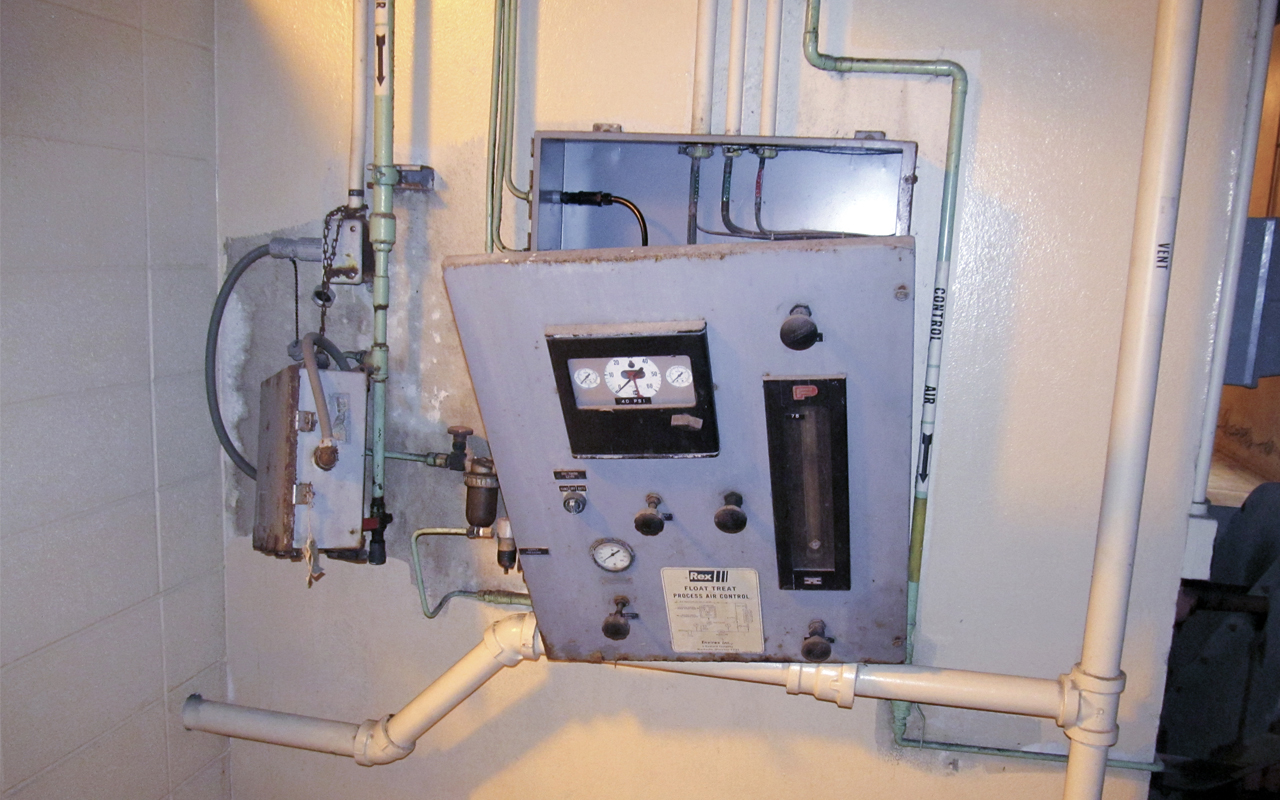
6. Have you noticed diminished process performance?
How is your facility performing? Has it unexpectedly begun demanding more energy to perform certain processes? Have you noticed a steady decrease over a long period of time? While reduced performance over time is expected, it can also signify the need for a more detailed investigation. Here are five signs of poor performance:
- The infrastructure’s ability to achieve effluent limits has become more challenging or feels like it’s working against itself.
- Your pumps aren’t pumping nearly as many gallons per minute as usual or cannot achieve enough pressure to be effective.
- Your aeration blowers use more kilowatts of power than usual to maintain the same aeration basin dissolved oxygen content.
- Your anaerobic digesters aren’t producing the amount of gas expected or needed.
- The sludge dewatering process isn’t achieving the expected or needed percentage of sludge cake solids.
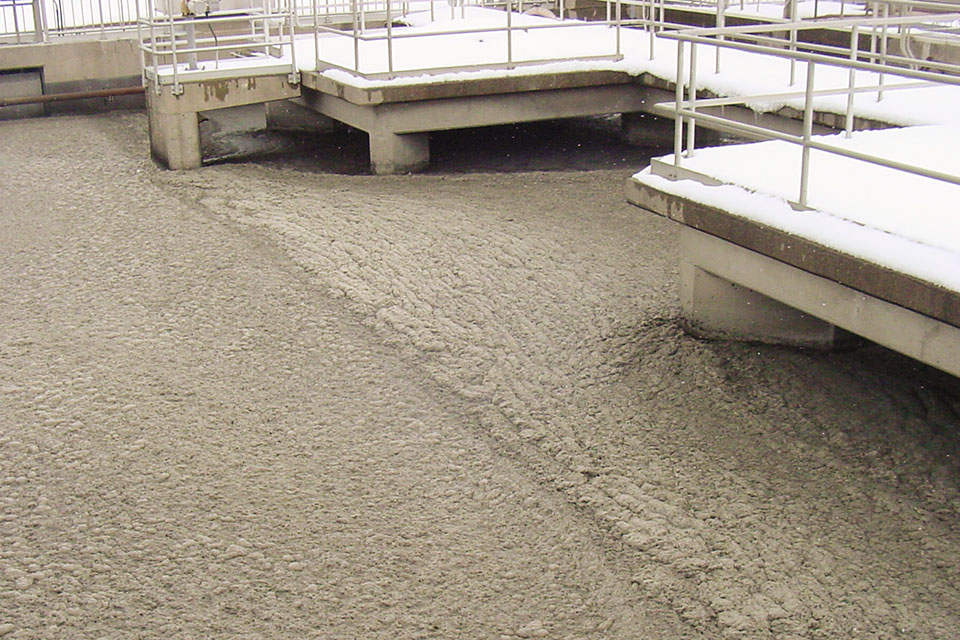
Prioritize your repairs and replacements using a risk-based asset management approach. This accounts for processes and equipment that have the greatest probability of failure, and helps you determine the most dire consequences if they do indeed fail. Stated more simply: Probability of Failure x Consequences of Failure = Risk Exposure.
– Al Bush, SEH Senior Professional Engineer
7. Are you having difficulty finding spare parts and replacement components?
Outdated equipment can be hard to fix. Repair components may no longer be available on the market, difficult to find or challenging to install. Outdated equipment can also be more expensive. In these cases, first, consider a condition assessment. Then, ask yourself if the costs and timelines associated with repairing an aging control panel, valve actuators or large butterfly valves, for example, offer the return needed as you factor in your long-term water infrastructure plans.
Understanding the state of your infrastructure ensures your dollars and time are put to best use. Facility condition assessments can provide the information needed to ensure these decisions are fully informed. They can also make sure you’re more equipped to communicate project needs to stakeholders and the community when it comes time for buy-in, funding and other needs.
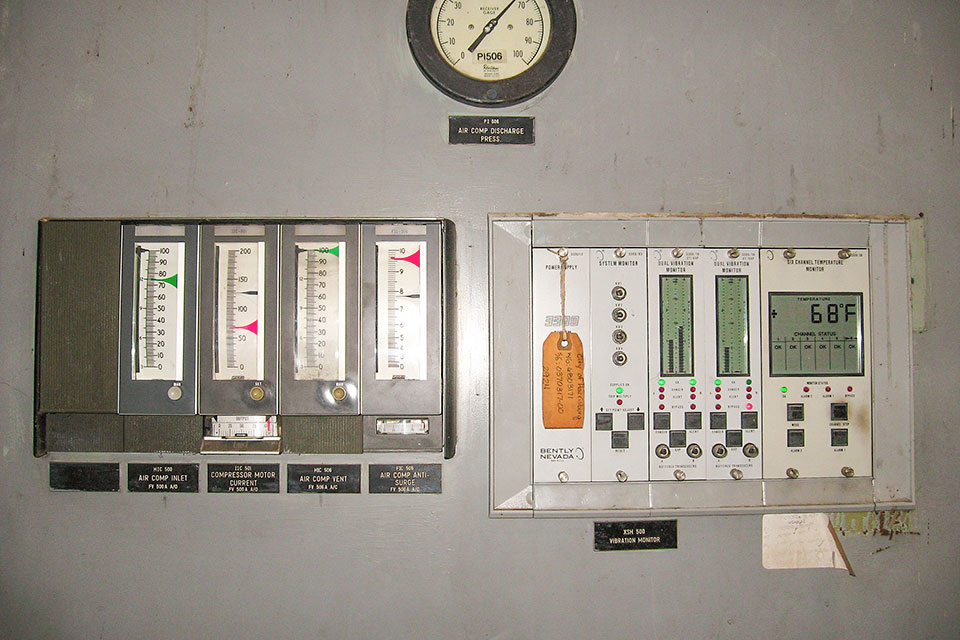
Protect your assets
Condition assessments that identify early indicators of deterioration are one of the most effective and proactive ways to protect your assets and future generations. They help you prioritize improvements, evaluate risks through a combination of consequences and probability of failure, identify feasible replacement or rehabilitation alternatives, and glean potential construction costs.
Questions?
Unsure if your facility is in need of a closer look? Want to learn more about the facility condition assessment process? Have any questions? Let’s connect!
About the Authors

Susan Danzl, PE*, is SEH’s wastewater market lead and a trusted resource to her clients – partnering with communities, facilities and operating staff to guide them through all kinds of wastewater challenges, questions and regulations. Passionate about water quality and providing better service day after day, Susan is a member of the Water Environment Federation, Central States Water Environment Association and Minnesota Wastewater Operators Association.
*Registered Professional Engineer in CA, CO, IA, MN, VA

Jessica Hedin, PE* is an SEH project manager and senior wastewater professional engineer with more than 20 years of experience in the planning and design of industrial and municipal wastewater treatment facilities.
*Registered Professional Engineer in MN

.png?width=113&name=SEH_Logo_RGB%20(1).png)

